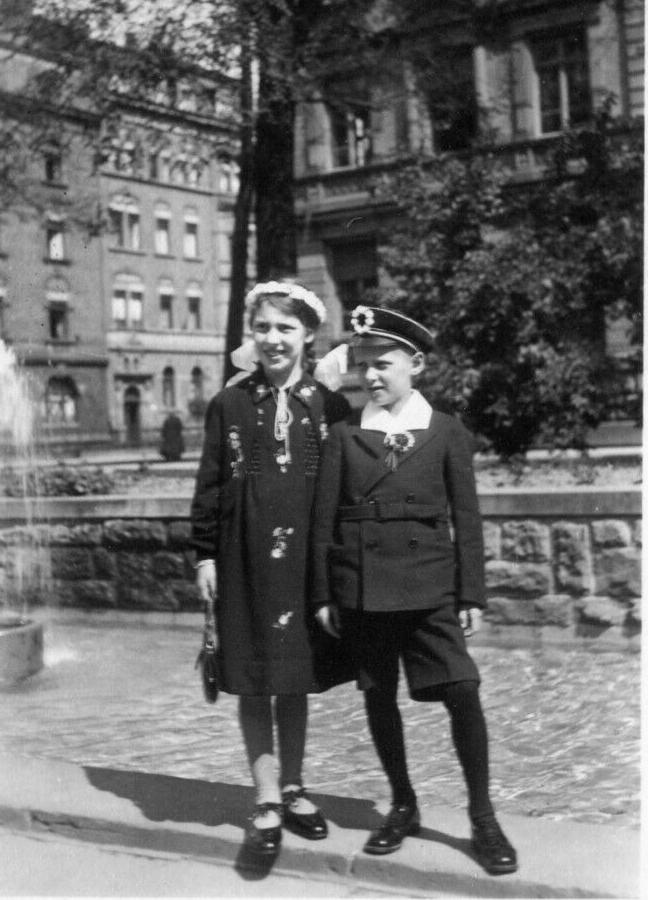
Figure 1.-- Here we see two unidentified German children about 1930. We think they are going to church on Sunday. We are unsure what the flowers are all about. Perhaps something to do wih Easter. |

|
Germany after World War I was a largely Protestant country. About two-thirds of the German population was Protestant and the remainder mostly Roman Catholic. Bavaria in southern Germany was strongly Roman Catholic stronghold. There were also Roman Catholics in western Germany, including Baden-Württemberg, the Saarland, and in much of the Rhineland. The rest of Germany, especially the north and northeast were strongly Protestants. Church attendance was still substanial, especially among the country's middle-class. Bismarck had given up on his Kulturkampf against Catholics to focus on socialists. The Catholic Center Part actually joined with Bismarck and his sucessoers to oppose the Socialists. The Weimar national constitution provided for no state church, and guaranteed complete freedom of faith and religion (1919). In the Imperial era, such freedoms were accorded only in state constitutions, meaning proimarily the former German states that were united to form Imperial Germany. Protestants and Catholics were made fully equal before the law. Jews had acquired full citizenship and civil rights. And German Jews were among the most assimilated in Europe. Free thought flourished and was also protected. The German Freethinkers League was popular, acquiring some 0.5 milliom members. They were essentially atheists. TYhe NAZIs supressed the League a few months after seizing power (May 1933). ["Atheist Hall ..."] Attendance at religious services was affected by World and the growth of left-wing thought, especially Communism and Socialism. This in particular affected working-class Germans which were attracted by Socialist and Communist thought. Middle-class and rural Germans still attended Church services in large numbers. Church rolls declined further during the Great Depression. Some 186,000 Germans stopped attending Christian churches in one yera alome (1932). Even so the vast majority of Germans identified themselves as Christians.
"Atheist Hall converted: Berlin churches establish bureau to win back worshipers," The New York Times (May 14,1933), p. 2.
Navigate the Boys' Historical Clothing German pages:
[Return to the Main German religion page ]
[Return to the Main religion page]
[German art]
[German choirs]
[German Movies]
[German royalty]
[German school uniforms]
[German youth groups]
[German sailor suits]
[Lederhosen]
[Ethnic]
[Tights]
[Long stockings]
Navigate the Boys' Historical Clothing Web Site:
[About Us]
[Introduction]
[Activities]
[Biographies]
[Chronology]
[Clothing styles]
[Countries]
[Girls]
[Theatricals]
[Topics]
[Bibliographies]
[Contributions]
[FAQs]
[Glossaries]
[Images]
[Links]
[Registration]
[Tools]
[Boys' Clothing Home]
